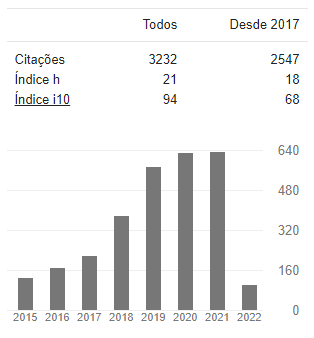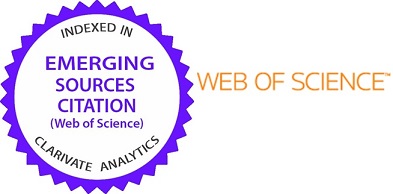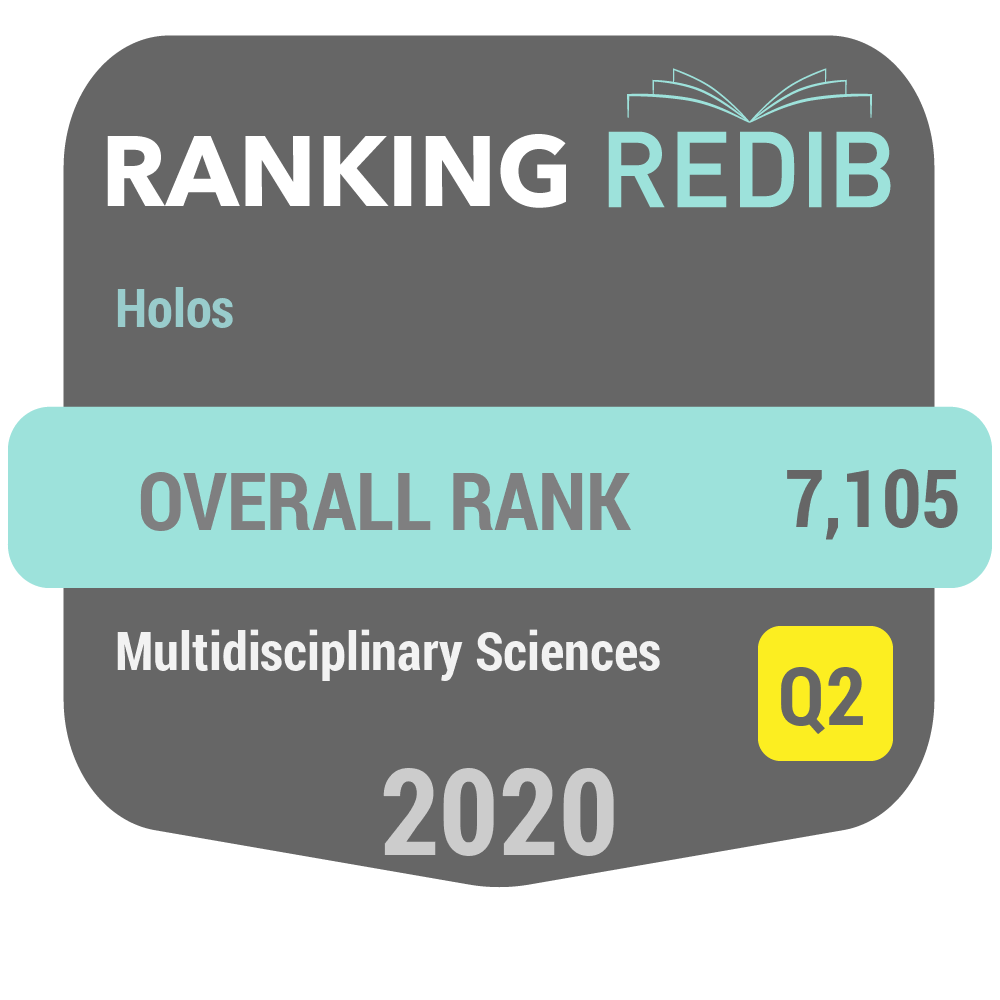CONSERVAÇÃO DE TECIDOS SOMÁTICOS DE CATETOS (Pecari tajacu LINNAEUS, 1758) SUBMETIDO A DIFERENTES CONDIÇÕES DE ARMAZENAMENTO
DOI:
https://doi.org/10.15628/holos.2020.9862Palavras-chave:
mamíferos silvestres, criopreservação tecidual, refrigeração de amostras somáticasResumo
O objetivo foi avaliar a influência da conservação [refrigeração a 5°C e vitrificação] sobre tecidos somáticos de catetos. O experimento foi dividido em duas etapas. Na primeira etapa, fragmentos foram refrigerados por 24 (R-24) e 48 h (R-48) e comparados com amostras não refrigeradas (C). Na segunda etapa, fragmentos foram refrigerados por 24 (RV-24) e 48 h (RV-48) seguidos da vitrificação, e comparados com fragmentos apenas vitrificados (V). Na primeira etapa, embora a espessura da epiderme não tenha sido afetada pela refrigeração por 48 h, a espessura da derme foi reduzida tanto no período de 24 h quanto de 48 h. Além disso, enquanto uma redução de fibroblastos dérmicos foi apenas evidenciada no grupo R-48, o aumento de halos perinucleares da epiderme foi observado em todos os grupos refrigerados. Na segunda etapa, tanto a espessura da epiderme, quanto da derme e total foram afetadas pela vitrificação após a refrigeração por 48 h. Além disso, enquanto uma redução de fibroblastos dérmicos foi apenas evidenciada no grupo RV-48, o aumento de halos perinucleares da epiderme foi observado em todos os grupos vitrificados. Assim, independente do período de armazenamento, a refrigeração afetou a qualidade dos tecidos somáticos de catetos, sendo esses efeitos acentuados quando os fragmentos foram refrigerados por 48 h e vitrificados. Portanto, sugere-se, quando necessário, o período de 24 h de refrigeração para amostras somáticas derivadas de catetos que irão ainda ser vitrificadas.
Downloads
Referências
Best, B. P. (2015). Cryoprotectant toxicity: facts, issues, and questions. Rejuvenation Research, 18, 422-436.
Boekema, B. K. H. L., Boekestijn, B., Breederveld, R. S. (2015). Evaluation of saline, RPMI and DMEM/F12 for storage of split-thickness skin grafts. Burns, 41, 848-852.
Borges, A. A., Lima, G. L., Queiroz Neta, L. B., Santos, M. V. O., Oliveira, M. F., Silva, A. R., & Pereira, A. F. (2017). Conservation of somatic tissue derived from collared peccaries (Pecari tajacu Linnaeus, 1758) using direct or solid-surface vitrification techniques. Cytotechnology, 69, 643-654.
Borges, A. A., Lira, G. P. O., Nascimento, L. E., Queiroz Neta, L. B., Santos, M. V. O., Oliveira, M. F., Silva, A. R., & Pereira, A. F. (2018). Influence of cryopreservation solution on the in vitro culture of skin tissues derived from collared peccary (Pecari tajacu Linnaeus, 1758). Biopreservation and Biobanking, 16, 77-81.
Caamaño, J. N., Rodriguez, A., Muñoz, M., Frutos, C., Diez, C., & Gómez, E. (2008). Cryopreservation of brown bear skin biopsies. Cell Preservation Technology, 6, 83-86.
Desbiez, A. L. J., Keuroghlian, A., Beisiegel, B. M., Medici, E. P., Gatti, A., Pontes, A. R. M., Campos, C. B., Tófoli, C. F., Júnior, E. A. M., Azevedo, F. C., Pinho, G. M., Cordeiro, J. L. P., Morais, A. A., Mangini, P. R., Flesher, K., Rodrigues, L. F., & Almeida, L. B. (2012). Avaliação do risco de extinção do cateto Pecari tajacu Linnaeus, 1758, no Brasil. Biodiversidade Brasileira, 1, 74-83.
Elliott, G. D., Wang, S., & Fuller, B. J. (2017). Cryoprotectants: A review of the actions and applications of cryoprotective solutes that modulate cell recovery from ultra-low temperatures. Cryobiology, 76, 74-91.
Erdag, G., Eroglu, A., Morgan, J. R., & Toner, M. (2002). Cryopreservation of fetal skin is improved by extracellular trehalose. Cryobiology, 44, 218-228.
Hib, J. (2003). Sistema tegumentar, p.215-233. In: Hib J. (Ed.), Di Fiori Histologia. Guanabara Koogan, Rio de Janeiro.
IUCN, IUCN Red List of Threatened Species. Ano de publicação 2015. Disponível em: http://www.iucnredlist.org/details/4015/0. Acesso em 17 de fevereiro de 2020.
Lewis, J. K., Bischof, J. C., Braslavsky, I., Brockbank, K. G., Fahy, G. M., Fuller, B. J., Rabin, Y., Tocchio, A., Woods, E. J., Wowk, B. G., Acker, J. P., & Giwa, S. (2016). The grand challenges of organ banking: proceedings from the first global summit on complex tissue cryopreservation. Cryobiology, 72, 169-182.
Lima, G. L., Santos, E. A. A., Lima, L. F., Luz, V. B., Rodrigues, A. P. R., & Silva, A. R. (2014). Short-term preservation of Pecari tajacu ovarian preantral follicles using phosphate buffered saline (PBS) or powdered coconut water (ACP®) media. Arquivo Brasileiro de Medicina Veterinária e Zootecnia, 66, 1623-1630.
Mayor, P., Guimarães, D., Le Pendu, Y., Silva, J. V., Jori, F., & López-Béjar, M. (2007). Reproductive performance of captive collared peccaries (Tayassu tajacu) in the eastern Amazon. Animal Reproduction Science, 102, 88-97.
Ménorval, M. A., Mir, L. M., Fernández, M. L., & Reigada, R. (2012). Effects of dimethyl sulfoxide in cholesterol-containing lipid membranes: a comparative study of experiments in silico and with cells. PloS one, 7, p. e41733.
Minervino, A. H. H., Araújo, C. A. S. C., Barrêto-Júnior, R. A., Soares, H. S., Oliveira, M. F., Mori, C. S., Neves, K. A. L., Vale, W. G., Gennari, S. M., & Ortolani, E. L. (2014). Serum biochemistry of collared peccaries (Pecari tajacu) in captivity in Northeastern Brazil. Pakistan Veterinary Journal, 34, 538-540.
Okonkwo, C., & Singh, M. (2014). Recovery of fibroblast-like cells from refrigerated goat skin up to 41 d of animal death. In Vitro Cell Development and Biology Animal, 51, 463–469.
Pereira, A. F., Borges, A. A., Santos, M. V. O., & Lira, G. P. O. (2019). Use of cloning by nuclear transfer in the conservation and multiplication of wild mammals. Revista Brasileira de Reprodução Animal, 43, 242-247.
Queiroz Neta, L. B., Lira, G. P. O., Borges, A. A., Santos, M. V. O., Silva, M. B., Oliveira, L. R. M., Silva, A. R., Oliveira, M. F., & Pereira, A. F. (2018). Influence of storage time and nutrient medium on recovery of fibroblast-like cells from refrigerated collared peccary (Pecari tajacu Linnaeus, 1758) skin. In Vitro Cellular & Developmental Biology-Animal, 54, 486-495.
Sharma, R., Sharma, H., Ahlawat, S., Aggarwal, R. A. K., Vij, P. K., & Tantia, M. S. (2018). First attempt on somatic cell cryopreservation of critically endangered Camelus bactrianus of India. Gene Reports, 10, 109-115.
Silva, A. M., Bezerra, L. G. P., Praxedes, E. C. G., Moreira, S. S. J., Souza, C. M. P., Oliveira, M. F., Pereira, A. F., Comizzoli, P., & Silva A. R. (2019). Combination of intracellular cryoprotectants preserves the structure and the cells proliferative capacity potential of adult collared peccary testicular tissue subjected to solid surface vitrification. Cryobiology, 91, 53-60.
Silvestre, M. A., Saeed, A. M., Escriba, M. J., & Garcia-Ximénez, F. (2002). Vitrification and rapid freezing of rabbit fetal tissues and skin samples from rabbits and pigs. Theriogenology, 58, 69-76.
Silvestre, M. A., Saeed, A. M., Cervera, R. P., Escribá, M. J., & García-Ximénez, F. (2003). Rabbit and pig ear skin sample cryobanking: effects of storage time and temperature of the whole ear extirpated immediately after death. Theriogenology, 46, 1469-1477.
Silvestre, M. A., Sánchez, J. P., & Gómez, E. A. (2004). Vitrification of goat, sheep, and cattle skin samples from whole ear extirpated after death and maintained at different storage times and temperatures. Theriogenology, 49, 221-229.
Simonin, H., Beney, L., & Gervais, P. (2007). Sequence of occurring damages in yeast plasma membrane during dehydration and rehydration: mechanisms of cell death. Biochimica et Biophysica Acta (BBA)-Biomembranes, 1768, 1600-1610.
Singh, M., Ma, X., Amoah, E., & Kannan, G. (2011). In vitro culture of fibroblast-like cells from postmortem skin of Katahdin sheep stored at 4°C for different time intervals. In Vitro Cellular & Developmental Biology – Animal, 47, 290-293.
Singh, M., & Ma, X. (2014). In vitro culture of fibroblast-like cells from sheep ear skin stored at 25-26°C for 10 days after animal death. International Journal of Biology, 6, 96-102.
Sydykov, B., Oldenhof, H., Barros, L. O., Sieme, H.; & Wolkers, W. F. (2018). Membrane permeabilization of phosphatidylcholine liposomes induced by cryopreservation and vitrification solutions. Biochimica et Biophysica Acta (BBA)-Biomembranes, 1860, 467-474.
Sterne, G. D., Titley, O., & Christie, J. L. (2000). A qualitative histological assessment of various storage conditions on short term preservation of human split skin grafts. British Journal of Plastic Surgery, 53, 331–336.
Summerfield, A., Meurens, F., & Ricklin, M. E. (2015). The immunology of the porcine skin and its value as a model for human skin. Molecular Immunology, 66, 14-21.
Tovar, H., Navarrete, F., Rodríguez, L., Skewes, O., & Castro, F. O. (2008). Cold storage of biopsies from wild endangered native Chilean species in field conditions and subsequent isolation of primary culture cell lines. In Vitro Cellular & Developmental Biology-Animal, 44, 309-320.
Walcott, B, & Singh, M. (2017). Recovery of proliferative cells up to 15-and 49-day postmortem from bovine skin stored at 25° C and 4°C, respectively. Cogent Biology, 3, 1333760.









































